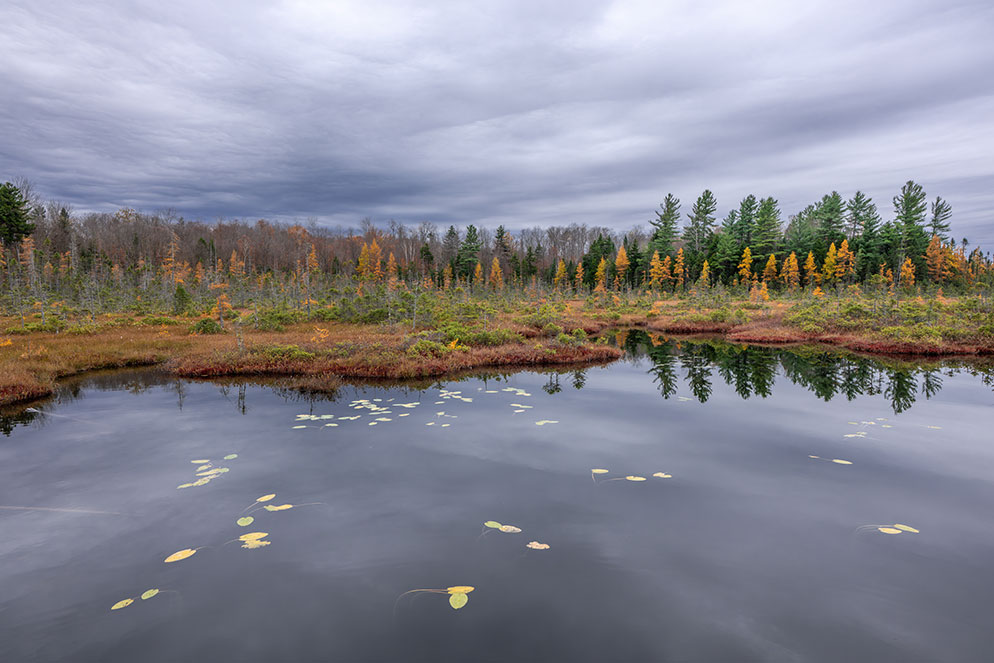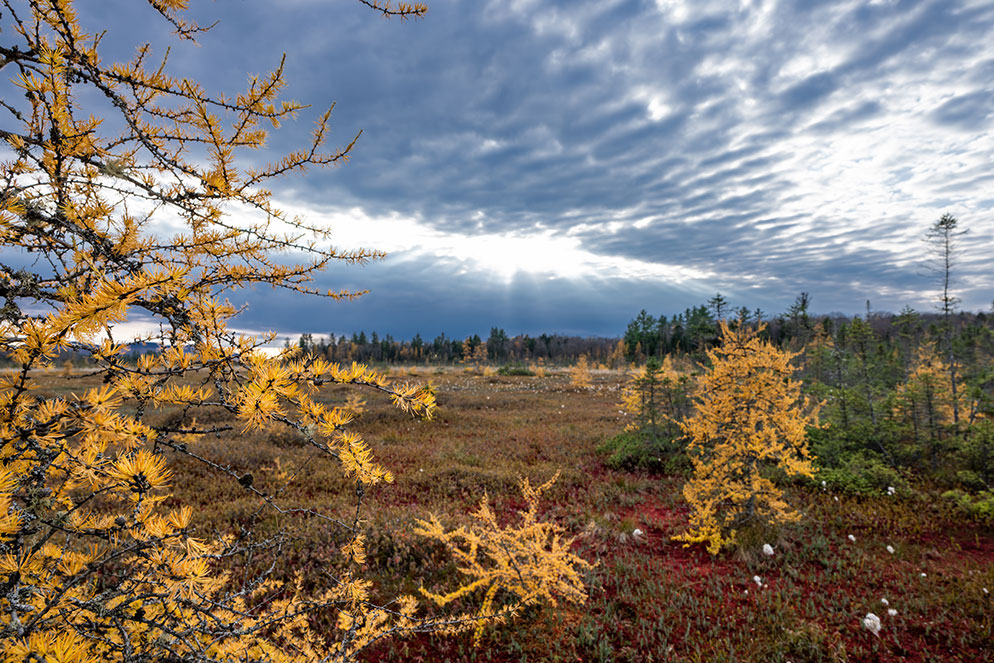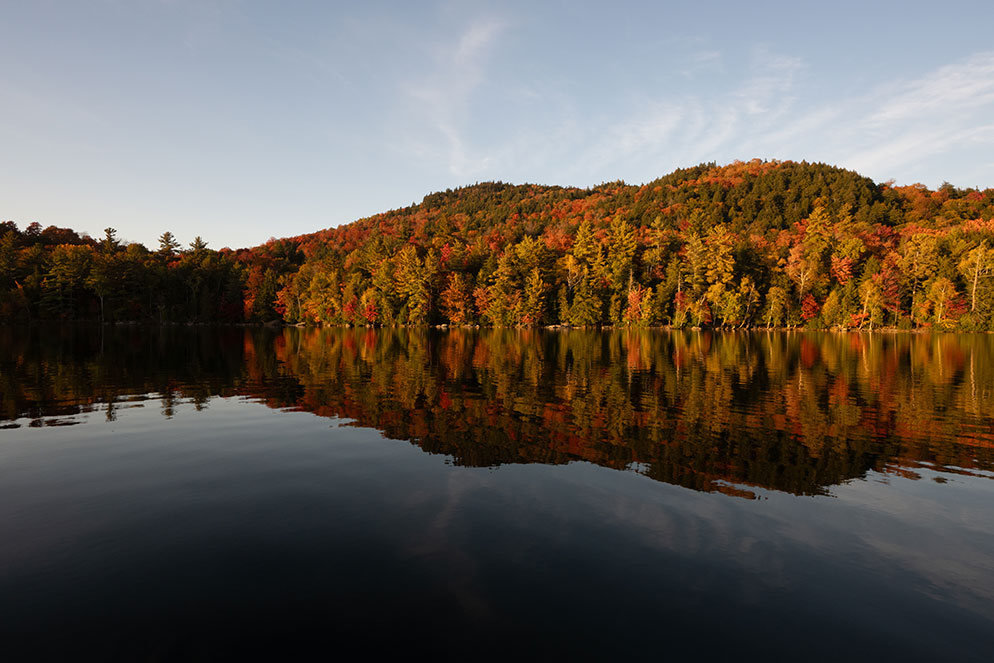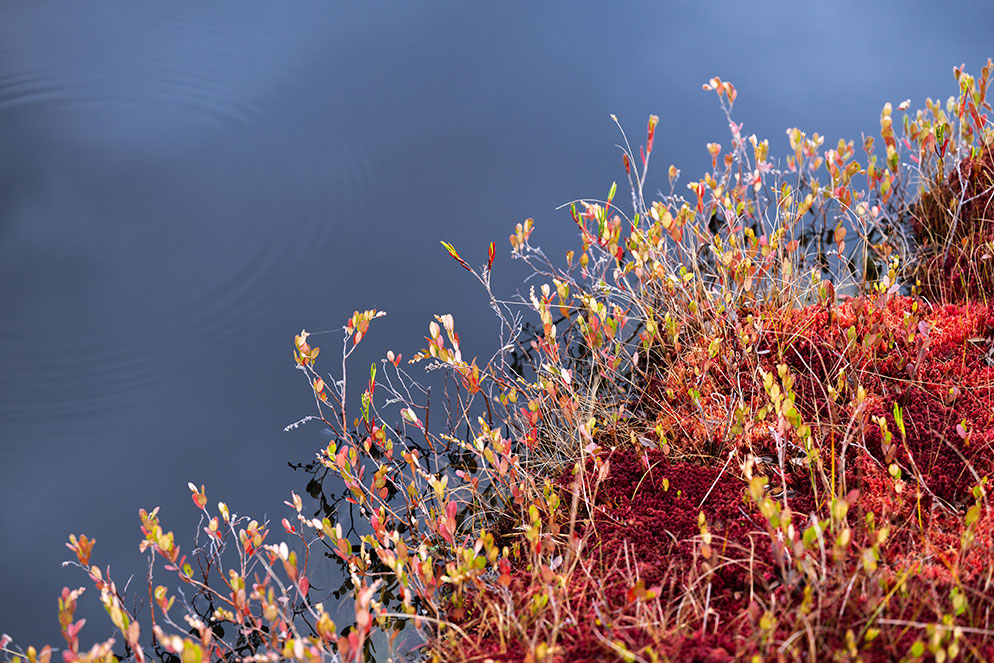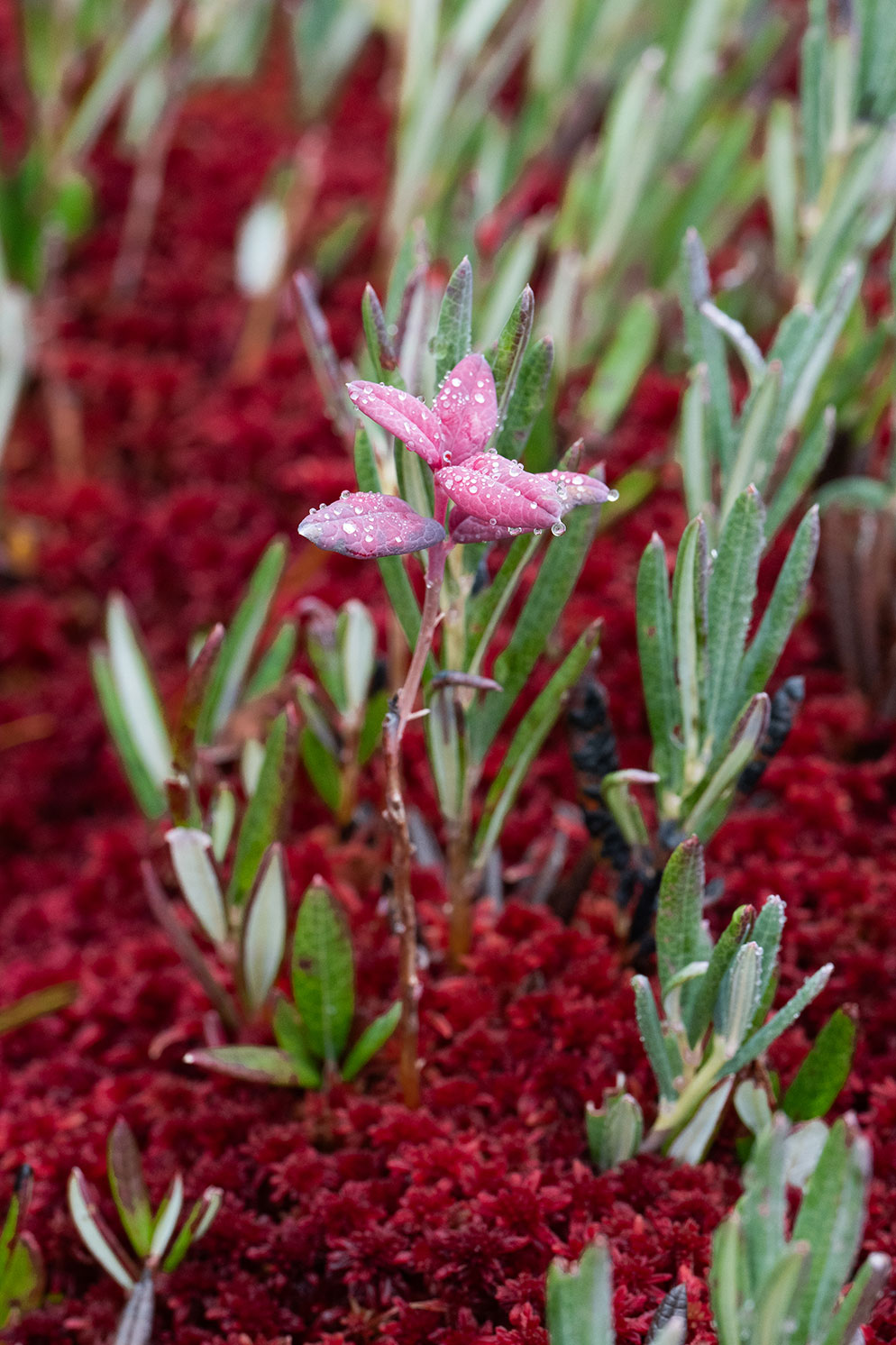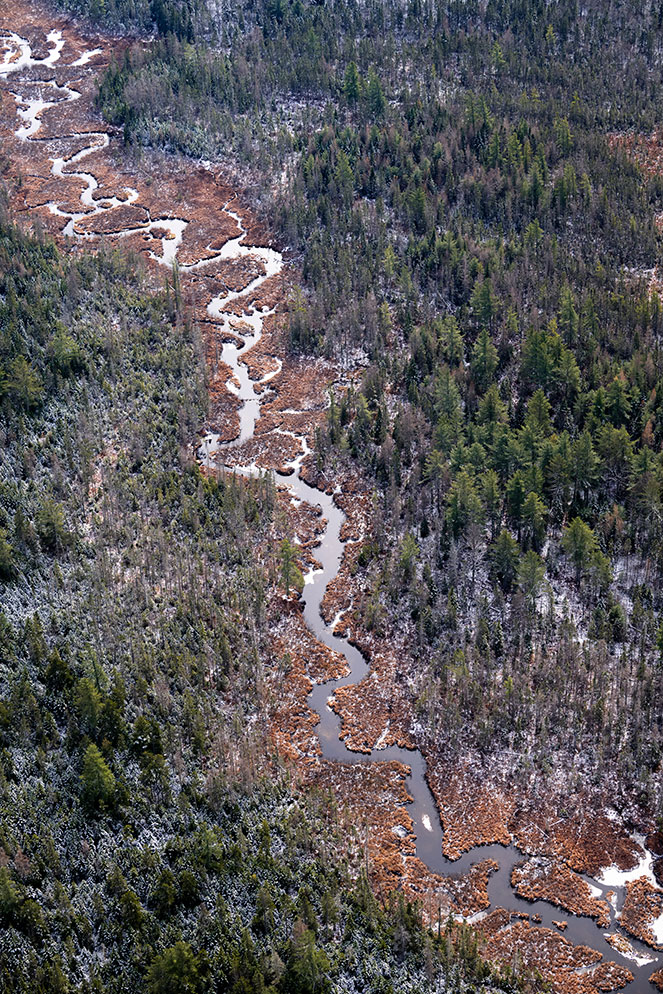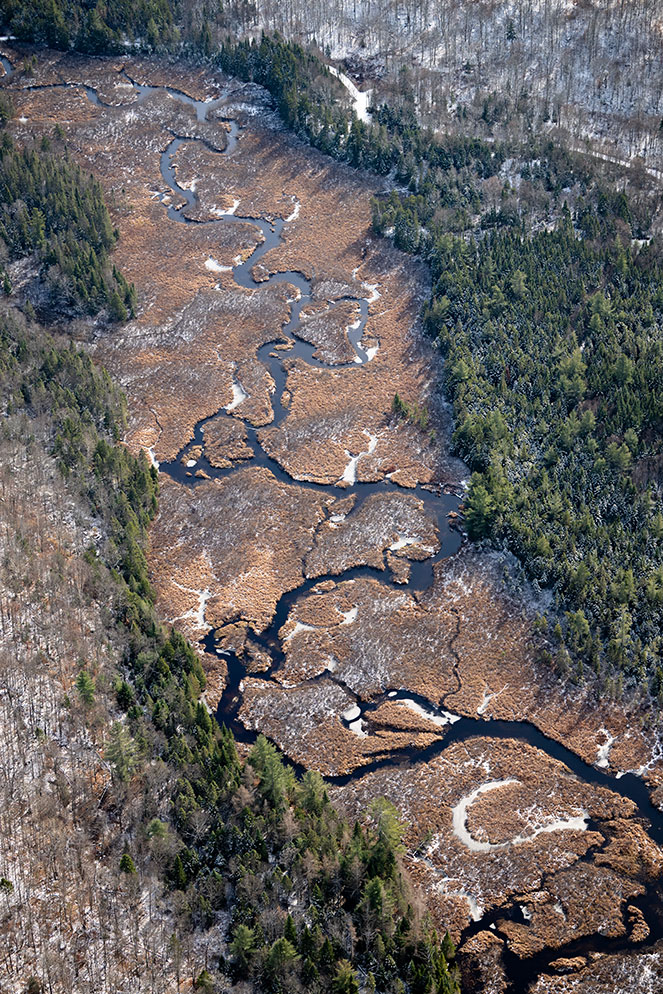True Colors: Z 8, When Your Goal is More Than Pretty Pictures
The Northern Peatlands. Charlie Reinertsen is a photographer and videographer who holds degrees in Natural Science Education and Environment & Natural Resources. He is the founder of the Northern Peatlands Project, which makes its home at his Twolined Studio website.
The purpose of Charlie Reinertsen’s photography is pretty much summed up in his Northern Peatlands video. First, to inform people about the vital role peatlands play in the environment, and therefore in our lives, and second, to “grow a fanbase” for the land’s protection and preservation.
“Peatlands cover only three percent of the planet,” Charlie says, “but they have an outsized impact on its health. They help cool our planet, they’re a filtering system for our water and our air, and they’re also a haven for biodiversity. If you compare the peatlands to our global forests, they almost put the forests to shame with how much carbon they store.”
A spring-fed pond in Adirondack Park. The vegetation at the edge of the peatland is a mat of Sphagnum moss, and bog plants and a couple of black spruce,” Charlie says. “In the background are tamarack trees and a mix of hardwood forest. I love this perspective because you can envision the water just continuing into the vegetation, which is exactly what it does. Below the water there can be peat deposits 30 feet deep.” Z 8, NIKKOR Z 20mm f/1.8 S, 1/80 second, f/10, ISO 320, manual exposure.
We were interested in what Charlie had to tell us about the importance of the earth’s peatlands because, frankly, we knew practically nothing about it. And not incidentally, he mentioned that Nikon imaging technology was playing a part in helping him tell an increasingly important story.
Here’s some of what we learned.
“This is the reverse angle of the previous picture—I’m in the forest, looking out across the peatlands. Underneath, in the peat deposits, is trapped carbon.” Z 8, NIKKOR Z 20mm f/1.8 S, 1/250 second, f/9, ISO 500, aperture-priority exposure.
A Delicate Balance
“We’re in a kind of perfect storm of issues facing the peatlands,” Charlie says. “They are a very resilient eco system because the plants and animals in them are highly adapted to that specific environment. But with climate change, we’re seeing drier, warmer and lengthening summer seasons, and peatlands are dependent on the delicate balance of how much water is in the eco system.”
“Spring-fed McKenzie Pond is practically in my back yard, and to me this is a classic Adirondack photo—sunset at the height of fall color. But here’s no longer a borderline we can cross and think, Oh, now we’re in nature—pure, pristine, untouched. Even here, in what appears to be wilderness, there’s been the impact of human influence.” Z 8, NIKKOR Z 20mm f/1.8 S, 1/100 second, f/16, ISO 640, manual exposure.
Some peatland areas in Canada have dried out or have been intentionally drained to harvest peat for use as a biofuel. Peatlands are also threatened by the general clearing of land for development. “But peatlands can be replenished and regrown,” Charlie says, “and it’s become increasingly important for that to happen. In Europe, where a lot of peatlands were decimated for fuel, people are now working to restore them because we’ve started to learn more and more about how important they are.”
But before preservation, protection and replenishment can take place, more people have to know how vital the peatlands are. Which is where Charlie’s efforts, and our technology, comes in.
“I took this to show the interface between the water and the red carpet of Sphagnum moss and the bog plant above it. This is the living layer on top of the peat, and it will become peat when it dies and starts to be submerged and covered by the next layer of living plant material.” Z 8, NIKKOR Z 70-200mm f/2.8 VR S, 1/400 second, f/3.5, ISO 800, manual exposure.
Real-World Views
Charlie’s peatland images have to first catch the eye, then showcase the details that will support his written and spoken narratives. He used the Z 8 and several Z lenses to take the stills and make the videos you see here, and it’s the Z 8’s out-of-the-camera color rendition of overall landscapes and crucial close-up elements, plus the incredible accuracy and reliability of the camera’s Eye AF, that makes the difference in his visual storytelling.
“This pitcher plant, growing up from a bed of Sphagnum moss, has a cup—a modified leaf—that’s holding its nectar, which is laced with toxin. Bugs will crawl down the surface of the leaf, on the downward-facing hairs, to drink the nectar. Essentially they get a little drunk, fall into the fluid and are digested by the plant.” Z 8, NIKKOR Z MC 105mm f/2.8 VR S, 1/100 second, f/14, ISO 500, aperture-priority exposure.
A close view of a bog plant growing out of Sphagnum moss. “I was drawn to the water droplets on the plant, for which I’m still looking for an ID.” Z 8, NIKKOR Z MC 105mm f/2.8 VR S, 1/320 second, f/10, ISO 500, aperture-priority exposure.
“I’m blown away by the Z 8,” Charlie says, “because one of the biggest challenges I face is that my photos should look the way I remember the landscapes. I’m trying to capture color balance, details and textures, and with the Z 8, the image clarity is incredible, even in low light. I want to transport people, to give them, as much as possible, a sense of what it actually feels like to see these places. What I’m able to get with the Z 8 is natural color reproduction, with incredible detail. This is not an eco-system most people are familiar with, so it’s really important that it’s reproduced accurately.”
As far as the lenses, he singles out the NIKKOR Z 800mm f/6.3 VR S that he used on a tripod for the videos and hand-held for some still images. “I was amazed that you can hand-hold the 800mm and not have any issues. It’s a fast lens, and you can bump the ISO when you need to. The combination of that lens and Z 8’s Eye AF—it felt like cheating.”
“Sphagnum moss plants survive the incredibly cold winters in Adirondack Park because of adaptation. During the first cold nights they shuttle water to the moss surface to grow ice crystals as a protective, insulating layer. But with more and more thaws in mid-winter, these areas will be threatened.” Z 8, NIKKOR Z MC 105mm f/2.8 VR S, 1/320 second, f/6.3, ISO 500, aperture-priority exposure.
I’m trying to capture color balance, details and textures, and with the Z 8, the image clarity is incredible, even in low light.
Charlie took this image from a small plane. “It was originally in color, but I felt it was more suitable to black and white because it was more about patterns than colors, and I liked the moonscape look of it. What you see is a spring surrounded by peatlands. To the left on the spring’s surface, ice is forming up. Those thin, vertical, crack-like lines you see are wildlife trails.” Z 8, NIKKOR Z 70-200mm f/2.8 VR S, 1/4000 second, f/5, ISO 640, aperture-priority exposure.
The Iconic Factor
Charlie’s been tackling the peatlands story from several angles, but tells us that there’s an issue with…well, let’s call it the perception of value.
“The on-ramp is this: As a society, there are certain eco systems we are drawn to and have an almost innate desire to protect” he says. “You visit Yellowstone, you look around and you say, ‘I get it. I get why we protect this.’ We see inherent value in Yellowstone, the Tetons and other iconic landscapes. When you look at peatlands, it’s different. We see them, at least partly, and maybe mainly, as a nuisance, especially on the Eastern Seaboard in the U.S., where so many peatlands have been drained. The great irony is that the peatlands are filling a similar role to the mangrove forests we hear being called ‘the lungs of our planet.’ The peatlands act as a natural filter of air and water, and they are also storing unbelievable amounts of carbon.”
A brook running through bog plants in Adirondack Park in a photo Charlie made to show how water is so tightly connected to the peatlands. Z 8, NIKKOR Z 70-200mm f/2.8 VR S, 1/1000 second, f/5, ISO 640, aperture-priority exposure.
A different segment of the brook in the previous photo, in an area with patterns of its own amid bog plants and forest. Z 8, NIKKOR Z 70-200mm f/2.8 VR S, 1/1250 second, ISO 500, f/4, aperture-priority exposure.
Charlie told us that the peatlands restoration story is huge in Europe right now because “they recognize what’s happening,” but it’s not nearly as big here in America. To communicate the value message, Charlie works through social media, his consulting business, Twolined Studio, and the Northern Peatlands Project—“a story-telling effort I founded where every month I publish stories, photos and videos to try to get people excited about this eco system, to learn about it and explore it alongside me. My background is in environmental education, biology and research, and my photography has always been in conversation with that.”
Meet the Gray Jay. “The fun part of gray jays is their curiosity. If you walk into their habitat they will come and seek you out. You have to get to where they are—which is usually very remote—but they love to be photographed.”
The Finch Irruption. “Finches are fairly nomadic, but prefer to be up in Canada in the winter where their feed source is. This winter they had a poor crop of pine cones, so they spent more time with us in the Adirondacks.”
The Bufflehead Reach. The lens Charlie mentions in his narrative is the NIKKOR Z 800mm f/6.3 VR S. His Z 8 was on his tripod’s ball head. “The 800 was the lens I used for several of the videos, with essentially a blind over the top of me.”
The Building Block. Sphagnum moss encompasses about 380 species of mosses, and it’s largely the primary component of peat moss. “Peatland landscapes take thousands of years to develop—many are relics of the last ice age,” Charlie says. “Even in areas where we’ve harvested peat, there are proven methods of restoring peatlands for really big carbon benefits in the long run.”
In fact, photography increases Charlie’s knowledge. “I often use it as my educational process,” he says. “When I become fascinated by something I see, I’ll photograph it, and that photograph becomes the jumping off-point for learning everything I can about what I’m seeing. It was that way with Sphagnum moss—I had to learn what it was.”
That happens almost every time he goes out, and he’ll bring people along with him as he learns. “Here’s this photo, and here’s everything I’m learning about what I saw, and here’s why you should care as well. That’s my process—surprising people about places I’m surprised by as I’m photographing them.”
Here at Nikon’s Learn and Explore section, Charlie’s process resonated with us for its concern for the environment, the use of the storytelling power of photography and, not the least, what we call his Explore and Learn spin on that power.
To find out more of what we learned from Charlie, and for more of his photos and details of his efforts on behalf of the northern peatlands, check out his website at Twolined.com.

